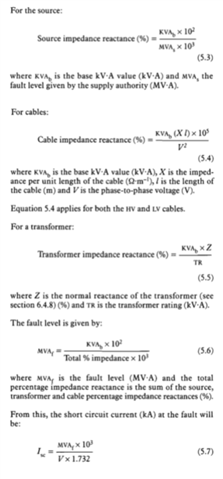Evening All,
Does anyone know the calculation method Amtech ProDesign uses to calculate the Line Fault and Earth Fault levels?
Based on the following secondary fault level conditions
Primary Fault Level: 250 MVA
Transformer Rating : 500 kVA
Impedance: 5%
The software will provide the following fault conditions
Line Fault: 13.881 kA
Earth Fault: 13.881 kV
Ze: 0.0166 Ohm
I believe I have an idea of how the Line Fault is calculated but I'm slightly stumped at how the Earth Fault and Ze are obtained and why it is the same as the Line Fault.

